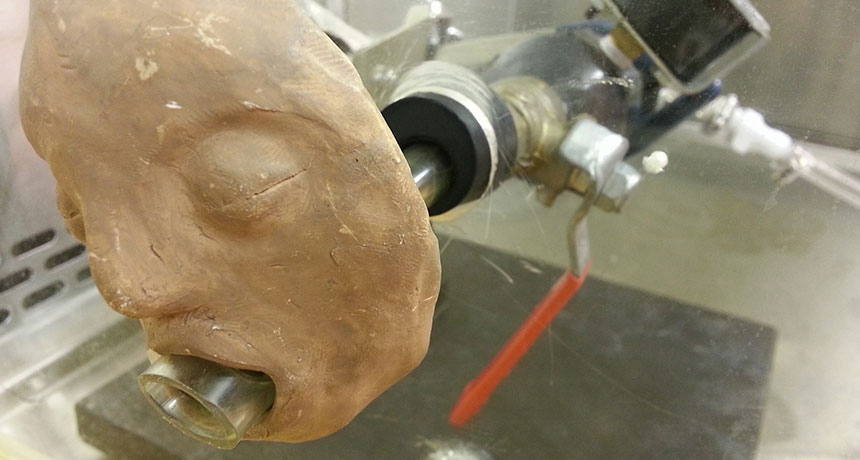‘Vomiting device’ sounds gross but it helps study infections
Machine that simulates throwing up shows researchers how noroviruses spread

KEEP IT DOWN The vomiting device, which mimics projectile vomiting, is equipped with a small human mask. The face provides aesthetic flair and also acts as a weight to keep the device’s “throat” curved, as a human’s throat is while vomiting.
Grace Tung-Thompson